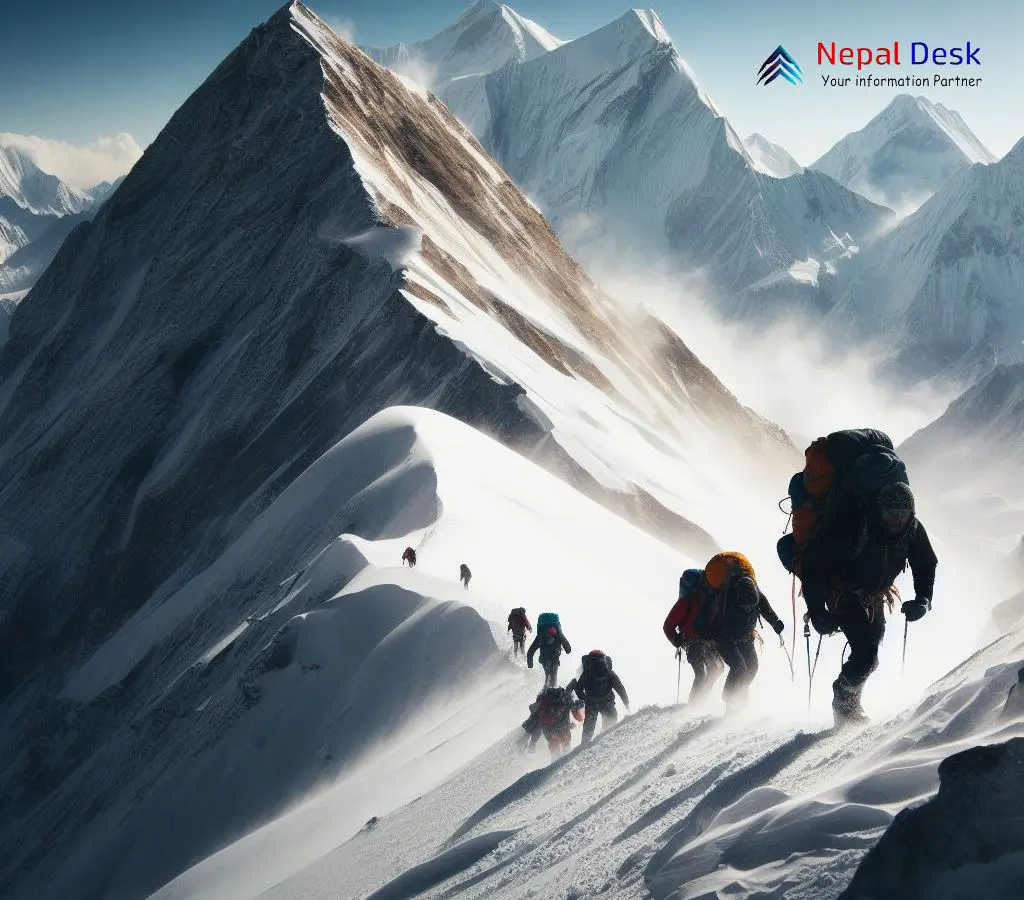Nepal's Court Ruling: Limit the Climbing Permits to Mountain Peaks
Published Date

Published Date
Explore Nepal's court ruling on climbing permits, aiming to preserve mountain environments amidst concerns of overcrowding and ecological integrity.
⏱ 2 min read
Nestled among the soaring Himalayas, the nation of Nepal, renowned for its lofty summits with eight of the world's ten tallest mountains, traditionally sees a flourish of mountaineering activity every spring. Climbers favor this season due to the milder temperatures and steadier winds. However, a recent court ruling may change the future of these pursuits.
The judgment, delivered in late April, was only publicized this week. Sparked by public worries over the ecological integrity of Nepal's iconic peaks, attorney Deepak Bikram Mishra successfully petitioned the court to consider scaling back the issuance of climbing permits. Following his appeal, the court has now mandated restrictions on climber numbers and introduced critical measures to manage waste and preserve these fragile mountain environments.
The ruling's synopsis emphasizes that we must honor the mountains' carrying capacity and calls for setting a definitive cap on permits. Despite this, neither the synopsis nor the unreleased full verdict specifies an exact quota.
Traditionally generous in its permit allocation, Nepal has not previously limited access to climbers willing to foot the $11,000 fee to ascend Everest—Earth's pinnacle at 8,848 meters. Last year's record-breaking issuance of 478 permits for Everest alone is indicative of this liberal policy.
The consequences of overcrowding became starkly apparent following a human logjam on Everest's perilous heights in 2019. The bottleneck at the summit forced climbers into lengthy and life-endangering waits under frigid conditions. Oxygen scarcity at these altitudes led to illness and extreme fatigue; overcrowding was cited as a factor in at least four out of eleven fatalities that year. To mitigate this strain, Mishra notably remarked that it is critical we "give [the mountain] some respite" from incessant climbing pressure.
The recent legal directive also narrows helicopter usage strictly to emergency rescue operations. There has been an increase in using these air transports for ferrying teams to base camps or over tricky topography.
Nima Nuru Sherpa, President of the Nepal Mountaineering Association, advises that any such regulations should result from comprehensive studies and discussions with affected parties. He points out that potential impacts on tourism are unclear as specifics about permit limitations remain undefined — along with their distribution amongst expedition companies. Sherpa suggests prioritizing safety enhancements on these treacherous slopes over implementing caps arbitrarily.
To date this year, Nepal has granted climbing rights to 945 individuals across all its mountains—403 for Everest alone—signifying yet another bustling season could be ahead.
